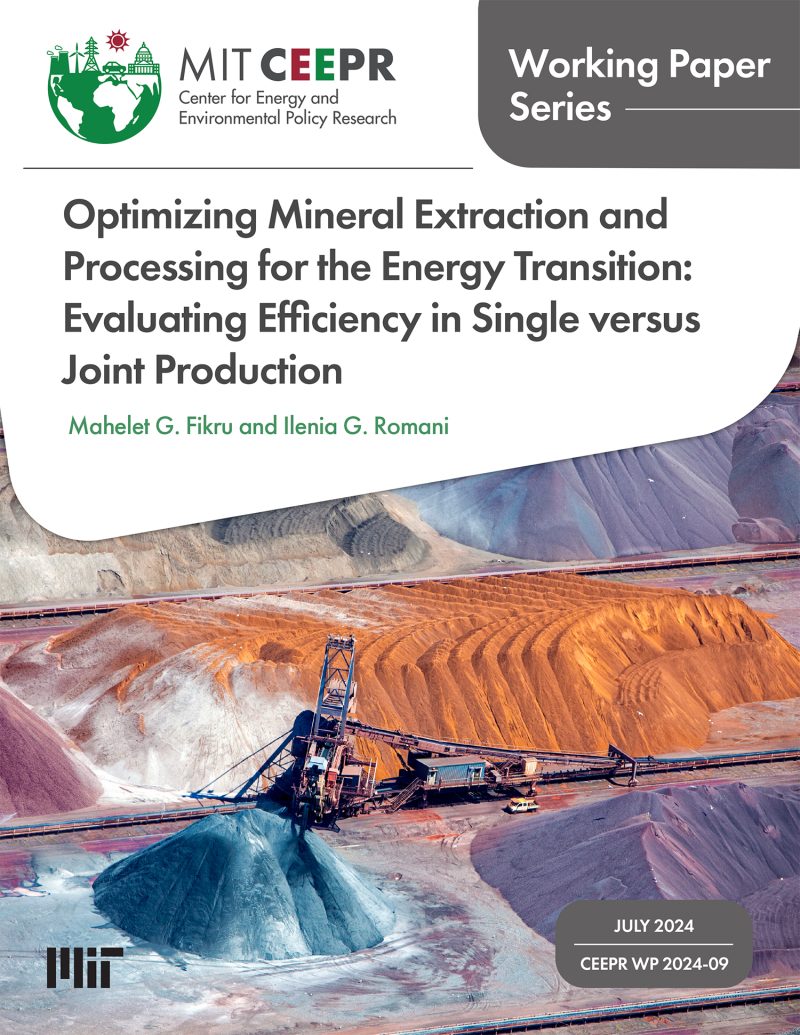Optimizing Mineral Extraction and Processing for the Energy Transition: Evaluating Efficiency in Single versus Joint Production
Mahelet G. Fikru and Ilenia G. Romani
July 2024
The efficient extraction and processing of ores into metals is key to clean energy transition technologies. This study compares single metal (e.g., copper) producers with joint metal (e.g., copper and cobalt, copper and nickel) producers in the mining and metallurgical sectors. Drawing from a theoretical framework grounded in optimization theories, we develop an economic model to characterize and compare the average cost of processing ore for these two types of firms. Additionally, we use empirical data from 427 mining projects worldwide to analyze the average cost of processing ores to produce copper, cobalt, and nickel, either as single or joint products. We find that the relative output elasticity of the ore is key to governing the response of average costs to changing model parameters such as unit costs and taxes, total factor productivity, metal demand, and the volume of the ore processed. We also derive conditions under which joint metal production can offer cost savings compared to single metal production, showcasing the economic advantages of multiple metal production to advance energy transition goals. By integrating theoretical modeling with real-world data, this study offers unique insight into cost dynamics, operational efficiency, and strategic decision making in mineral extraction and processing, with implications to optimize industry profits.
Keywords: critical minerals, energy transition, nickel, cobalt, ore, average cost, mining



